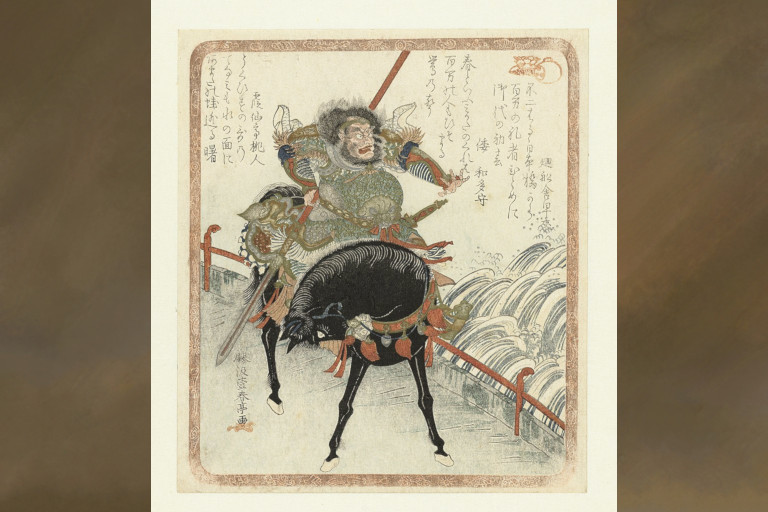Chinese culture has endured for the past 5,000 years and traditional Chinese medicine has always been an inseparable part of it. Modern-day people, especially the younger generation, often perceive this ancient Chinese medicine to be somewhat unsophisticated and less advanced than present-day pharmaceutical medicinal practices.
Ancient practitioners of Chinese medicine often left detailed records of successful treatments they applied to their patients. The following three excerpts from various ancient texts may provide you with a new understanding of traditional Chinese medicine.
Reattachment of severed fingers
During the Ming Dynasty, a man named Jiang Yu was once escorting money to Beijing. As he approached Zhending, known to be a place where robbers and bandits were active, he was attacked. In his struggle to ward off the robbers, two of his fingers were severed completely. It took him five days to reach Beijing. The excruciating pain, emanating from his severed fingers, drove him to seek medical help.

A doctor under General Qiu of Beijing heard about Jiang Yu’s case. He told Jiang Yu: “I can reattach your severed fingers.” It was fortunate that Jiang’s fingers were retrieved at the time. After an initial examination, the doctor immediately attached the fingers to the hand and then applied layers of ointment which he secured with a thin plate. He gave Jiang strict instructions for the wound not to touch water for the next twenty-one days.
Jiang complied with the doctor’s guidelines. When the time came to remove the plate and ointment, Jiang found that the severed fingers were reattached. They looked and felt the same as before, except for a tell-tale sign of a red line where the join was made.
In gratitude to the great doctor, Jiang gave him all the money he carried on him at that time — a total of 30 taels of silver. This story was told to Liu Zicai, the author of Idle Talk. As a Hubei official, he also mentioned that the doctor’s prescription ointment included ingredients such as opium, agate, powdered ivory, and frankincense.
A husband does divination for his wife’s illness
According to the ancient book Cave Forest, there was a man named Liu Linzu who made a living by fortune-telling and was skilled in divination. His wife had been suffering from scrofula for several years, and her condition had worsened to the point of being life-threatening. Liu Linzu performed divination and received the trigrams “Yi” and “Fu.”
According to the trigrams: “The healer should be a person with the surname Shi, and the illness will be cured when the rat who has received moxibustion is caught.”
A poor family named Shi lived in the village. The husband claimed he could cure scrofula. Liu Linzu let him try. He performed moxibustion on three spots on the wife’s head and she really felt much better.
After a while, a bright yellow rat came up to them. It stared at them and did not move. A dog was called to catch it. When they looked at the caught rat, they saw three spots on its head where it looked as though it had received moxibustion as well. From that day forward, Liu Linzu’s wife’s illness was completely cured.

Heart transplant story in ancient China using a miraculous Chinese medicine
Both Gong Hu and Qi Ying were sick. They asked the divine physician Bian Que to treat them. Bian Que first tried Chinese medicine and stone massage tools. Failing that, he proceeded to tell them, if they wanted to cure the disease, they needed to exchange their hearts. Both Gong Hu and Qi Ying agreed.
Bian Que gave them some anesthetic wine and after consuming it they fell unconscious for three days. After opening up their chests, Bian Que exchanged their hearts and gave them a miraculous Chinese medicine. Once they woke up, they felt as good as new. They said their goodbyes and went back to their respective homes. This was recorded in the Book of Liezi in the Tang Wen chapter.
After the successful heart exchange between Gong Hu and Qi Ying, something even more amazing happened — both Gong Hu and Qi Ying went to the wrong house. Gong Hu returned to Qi Ying’s house and recognized Qi Ying’s wife as being his own, while Qi Ying returned to Gong Hu’s house and recognized Gong Hu’s wife as being his own. However, neither of the wives recognized the men as being their own husbands, which led to a dispute between the two families and a lawsuit. The lawsuit was eventually settled after Bian Que explained the reason behind the confusion.
This heart exchange surgery took place in China 2,400 years ago during the Warring States period. Modern people may think that the heart exchange performed by the divine physician Bian Que is an impossible “myth.” In fact, surgery was already practiced in ancient times. Hua Tuo was a traditional Chinese medicine doctor of the Eastern Han Dynasty who anesthetized patients with Chinese anesthesia drugs, performed an intestinal resection and tumor removal, sutured it, and then applied a divine ointment to it. Both the Book of the Later Han and the Records of the Three Kingdoms have detailed records.
There are three basic theories in Chinese medicine. Firstly, there is the theory of the five elements of yin and yang; secondly, the theory of visceral activities; and thirdly, the theory of meridians. These theories are not yet understood by today’s science.
With the current epidemic still going strong, it would be curious to know how an ancient Chinese medical practitioner would have cured this modern-day disease and what traditional Chinese medicines they would have used and made available to help the world.
Translated by Cecilia
Follow us on Twitter, Facebook, or Pinterest

